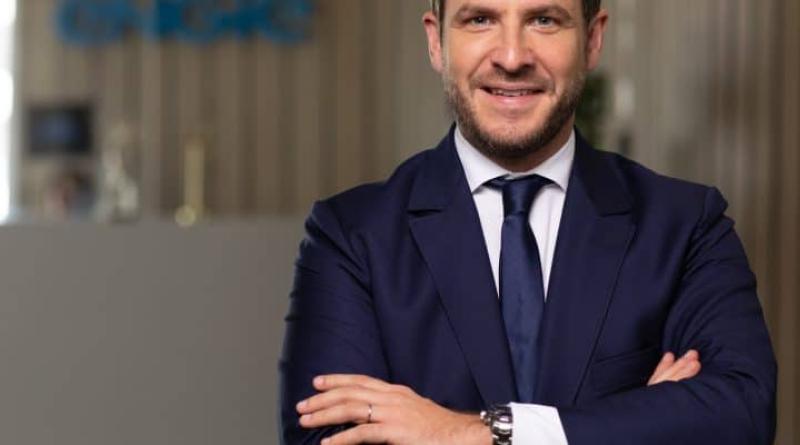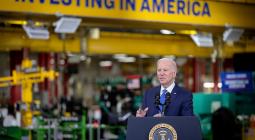Loïc Jaegert-Huber: “the hydrogen sector will take longer to develop”

As global energy giants move to accelerate the development of hydrogen, new studies and feedback suggest that this emerging sector should take even longer to decarbonize global economies. This opinion is shared by Loïc Jaegert-Huber, the regional director of Engie North Africa. In this interview, he also discusses the energy transition and the use of seawater desalination in the face of water stress in North Africa.
As global energy giants move to accelerate the development of hydrogen, new studies and feedback suggest that this emerging sector should take even longer to decarbonize global economies. This opinion is shared by Loïc Jaegert-Huber, the regional director of Engie North Africa. In this interview, he also discusses the energy transition and the use of seawater desalination in the face of water stress in North Africa.
Je an Marie Takouleu: Engie is among the independent electricity producers (IPP) currently active in North Africa. Is the energy transition a reality in this part of the continent?
Loïc Jaegert-Huber : As you know, Engie is present in around thirty countries around the world. In Africa mainly in Egypt, Morocco and South Africa. Engie is also present in sub-Saharan Africa in decentralized energy (through Engie Energy Access, Editor's note). We aim to achieve carbon neutrality by 2045, both for us (Engie), but also for our customers. We are lucky to have a balanced energy mix, an alliance between the molecule and the electron. Indeed, it is not just electricity, there is also gas which is increasingly used as transition energy.
Despite the gas debate?
We consider that gas is a transitional energy, because it is intended to become green as quickly as possible. This is why we are one of the major players in biomethane in the world. There is also green hydrogen, and natural hydrogen (or white hydrogen, Editor's note) which is present in the subsoil. Morocco is also one of the countries with high potential for this variety of hydrogen.
What about the energy transition in North Africa?
We consider that North Africa is fully engaged in an energy transition, both promising and exciting, with many challenges. But very clearly, it is a region which benefits from considerable potential, with ideal conditions for developing renewable energies, a considerable duration of sunshine, very good wind conditions, but also a general awareness of the climate emergency which requires an ambitious response.
We see it with the royal vision in Morocco. During COP27 in 2022, we also saw the emergence of an Egyptian ambition for the development of renewable energies. We consider that North Africa has all the keys to becoming a sustainable energy hub between Africa, Europe and the Middle East. Engie is already involved in the region with operational and development projects. This is a very good start, but much remains to be done.
In this region we observe a certain dynamism, particularly in Egypt and Morocco. But recently, Algeria launched a call for tenders for 2,000 MWp of photovoltaic solar energy. This is the beginning of an opening towards clean energies. Does Engie plan to invest in this sector over the coming years?
In the medium term, in North Africa, we will focus more on Egypt and Morocco. Obviously we discuss with the Algerians, but more on the gas supply.
In Egypt, wind turbines represent a danger for migratory birds that leave Europe to spend the winter in Africa, crossing the Gulf of Suez where you are currently building a 500 MW wind farm. Does this question concern you?
Biodiversity is an essential component of our projects. We have experts who work to ensure that our projects have as little impact as possible on fauna and flora. Of course, bird migration is very important and we do take that into account. This parameter was taken into account before launching the project, even more so now with the experience of the first 262 MW project.
It is therefore a question of carefully taking into account the trajectory of these birds in the choice of location, the spacing of the turbines and the orientation of the blades. Changes can also be made over time. This consideration of biodiversity also involves collaboration with local environmentalists who help us with knowledge of the field.
Engie is increasingly responding to calls for tenders for the construction of desalination plants. How can we explain this attraction for seawater desalination in North Africa?
You will certainly be surprised, but we are one of the world leaders in seawater desalination. We are therefore pioneers in this field.
But not in North Africa?
Yes, more in the Middle East. But in Africa, we are launching reverse osmosis units coupled with renewable energy. It is necessary today to have desalination plants that have less impact on the environment. We are therefore committed to only building desalination plants powered by renewable energies, in Africa and elsewhere in the world.
For example, the Dakhla desalination plant (in Western Sahara, editor's note) will be coupled with a 72 MW wind farm. With a production capacity of 112,000 m3 per day, the station will produce fresh water for irrigation and to supply populations. In these large projects, we play the role of developer and integrator. Engie wants to continue to be a leader in this sector in order to respond to water stress issues.
Given its energy consumption and the impacts on the coastal environment, is desalination really a virtuous solution?
Desalination is a solution of last resort. We try to find the most suitable sites for the construction of factories. There is also more and more research and development (R&D) on the subject, particularly for the reuse of brines (water with a high salt concentration, rejected by desalination plants, Editor's note), so as not to reject them directly into the environment. sea.
And when they are rejected, work is done on the rate of release so that salinity does not have too much impact on marine ecosystems. You also have to find the right place to do it, targeting the ocean currents so that they can spread the salinity as quickly as possible. We are also exploring the valorization of brines.
What can these brines be used for?
They can be used in many processes, particularly in the chemical and cement industries. In some countries, brines can also be used on mountainous roads in winter.
Engie is a member of the Green H2 Cluster. At the same time, the group began its activities in the hydrogen sector on the continent, at the Mogalakwena mine in South Africa. Are you planning to launch into the large-scale production of green hydrogen in the coming years in Africa?
Being an original gas producer, Engie has the necessary skills for the development of low-carbon hydrogen and derived molecules (ammonia for fertilizers, sustainable aviation fuel, methanol for bunkering ships, Editor's note). We are currently developing around a hundred renewable hydrogen projects in more than 15 countries around the world, of which 30 projects are dedicated to production.
Concerning the project at the Mogalakwena mine, it involves decarbonizing large mining trucks using green hydrogen. We are currently developing multi-sector systems for local needs, for export to Europe and Asia. We are also studying the potential of white hydrogen which is present in the subsoil, particularly in Morocco.
Hydrogen is already seen by some as a way of subjugating Africa, since most of the megaprojects announced on the continent are intended for export. What is your opinion on the matter?
The challenge is to find the right balance between renewables for local needs, desalination for the supply of drinking water and irrigation, and hydrogen intended for export via water electrolysis . . But the potential is such that we can both use these renewable energies for local needs and for export in the form of hydrogen and other derived products.
The advantage of export is that it sells for more, and for States, it is a discussion to have on the decarbonization of the energy mix, and how to benefit local populations from these resources.
Are there already major advances in the development of this sector at the global level?
You see that we have been talking about green hydrogen for several years. In 2017 and 2018, it was visions, with pilot projects envisaged in countries, notably in South Africa with the Engie initiative at the Mogalakwena mine. In 2019 and 2020, everyone started talking about it, especially in Europe where hydrogen was at the heart of several post-Covid-19 policies. In 2021 and 2022, there was a real global fever around hydrogen, with countries defining their strategies in this area. This is the case of Morocco and Egypt.
This is how the objectives for 2030 are confirmed and set in stone with ambitions revised upwards. The strategies are also updated and refocused on industrial uses. There is a major battle underway between the United States of America and Europe, demonstrating that the green hydrogen economy is gradually being triggered with regulations gradually being put in place.
And then, in 2023, there are several trends that can be observed, with the implementation of larger and larger projects, with the idea that it is the economy of scale that will be the key to profitability. . Increasingly, policies and strategies are promoting large-scale hydrogen infrastructure, particularly in transport and storage. The first projects showed a certain complexity of the electrolysis systems.
And then, new studies call into question the level of maturity of projects. The hydrogen sector will therefore certainly take more time to develop, including in North African countries. However, there is very strong potential, and industrial players are looking for a very competitive price which is not yet assured. In the short term, Engie will target a few flagship projects, medium or large, to test itself and respond to all industrial and technological challenges.
So, large-scale green hydrogen by 2030 is much too early?
The objective of producing hydrogen on a large scale by 2030 is audacious, because electrolysis technologies are not completely ready for GW projects. I am not pessimistic, quite the contrary. But this optimism must be reviewed on the scale of all these projects which are being put in place, with a choice which is also financial, to start on a few projects initially. North Africa and the Middle East have their cards to play due to their exceptional conditions.
Comments collected by Jean Marie Takouleu





